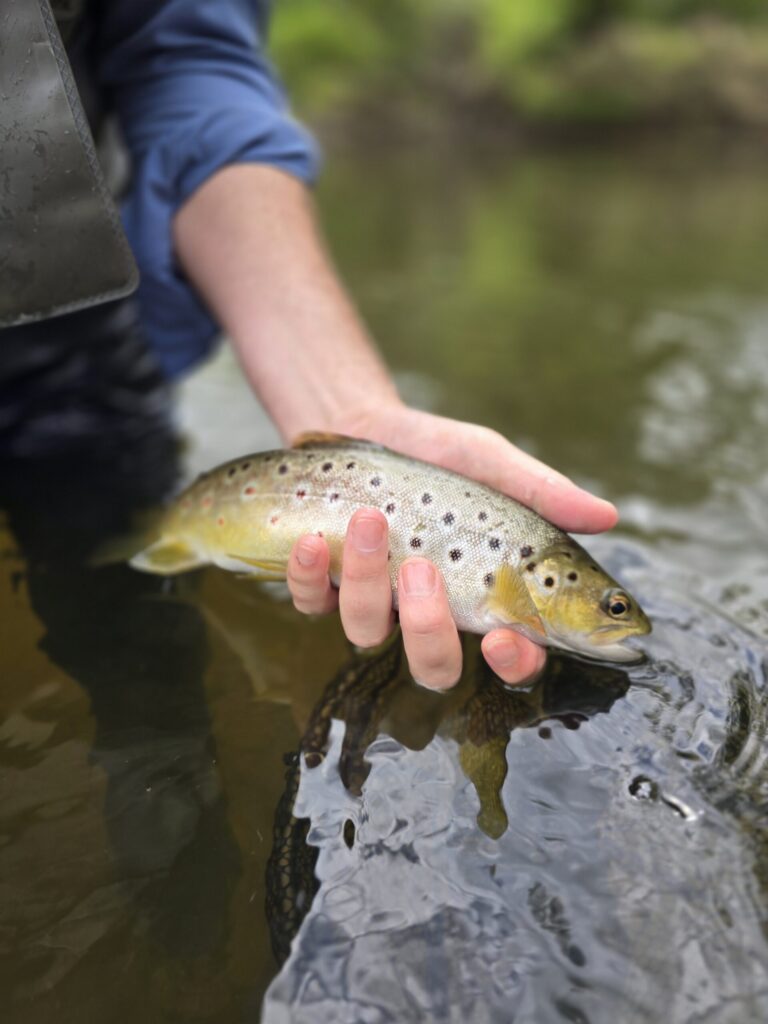October to November – fishing report
The season is off and racing, with our first month of guiding under our belt. October was much more difficult than normal due to prolonged stormy and cold weather, which in turn delayed the hatches until the last week of the month (six weeks later than the previous season!). Mixed weather has still dominated, but the fishing is getting more consistent on stable weather days, and we are starting to have consistent and large hatches. Multiple river systems are featuring hatches with mixed species of mayfly, combining with caddis and early damselflies which has been brilliant. Our best flies have been our 1864 Blue Damsel, and our 1864 Black and Peacock (sight-fished).
Post-cormorants
We had lots of great feedback on our previous post-season cormorant post, from anglers looking for tips. The Inland Fisheries Service even re-posted it to their public site. So what is our advice now that the season is underway, and the cormorant flocks have once again departed from most of inland Tasmania?
The most resilient (best sections) of rivers and lakes continue to feature long trailing weed, and/or significant woody debris such as log jams. The floods this spring have left behind some of the best large woody debris for years, as the high flows were enough to accumulate logjams, but not break them apart. Pool length seems to correlate to cormorant pressure and impact: the longer the pool, the more likely that cormorants have impacted the run (which makes sense if you have ever watched cormorants hunt). Water depth is still the number one observed influencer of catch rates post-cormorants: 90% of our fish are coming from water shallower than knee-height.
The fish are in great condition, dominated by year classes of younger fish who have more territorial space and food than normal. Population is down, with older year classes almost completely absent in some fisheries, with remaining fish sizes (and associated age classes) determined by the nature of available shelter. Rivers (such as Brumbys Creek) and lakes with extensive weebeds continue to hold strong year classes of fish from yearlings right up to fish around 3lbs. If the recent IFS survey of Little Pine is a good general indicator, approximately 85% of the fish population are in brilliant condition within these habitats, and under 400mm in length (2lbs or so). The remaing 15% of trout up to 3lbs (500mm) are in similar excellent condition. What we have also learnt from the rivers and lakes are that undercut habitats are of no benefit to fish evading cormorants. Either weedbeds, logjams or (underneath) rocks are the only potentially safe habitat to avoid flocks of cormorants.
We’ve had almost a dozen beginner anglers catch their first ever trout in the past fortnight, and more experienced anglers have had good sight fishing amongst strong hatches. Casts have to be accurate, and fish are wary if they are lined, or the presentation lands behind them. So lengthen your leader, practice your accuracy, and now is the time to get back on the water for the new season.

A typical young and fat, wild brown trout from spring 2024.
